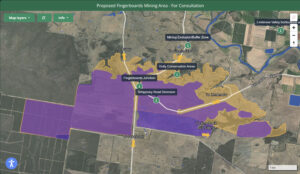
A team of researchers at CERN is testing a new type of sensor designed to improve monitoring capabilities in particle accelerators. The innovative hollow-core optical fibers, no thicker than a human hair, are being evaluated for their ability to withstand extreme radiation while measuring the profile and position of beams from the Super Proton Synchrotron, CERN’s second-largest accelerator. This advancement could significantly enhance the accuracy of experiments conducted in the North Area of the facility.
Advancements in Radiation Measurement
Unlike traditional optical fibers that guide light through solid glass, hollow-core fibers utilize a microstructure that allows light to be guided through resonance effects on the electromagnetic field. By filling these fibers with a scintillating gas—a gas that emits brief flashes of light when struck by particles—scientists can develop effective radiation sensors. This technology enables real-time adjustments of beam profiles and positions, which is crucial for both experimental and beam physicists.
Current monitoring tools, such as multi-wire proportional chambers and scintillator detectors, struggle in high radiation environments. The hollow-core fibers are designed to operate reliably even under these extreme conditions, making them suitable for future experiments at CERN and for medical applications, including FLASH radiotherapy. This innovative technique delivers radiation at ultra-high dose rates, offering promising prospects for cancer treatment, yet it necessitates the development of new monitoring tools.
Collaboration and Testing
A collaborative team focused on beam diagnostics at CERN, together with researchers exploring medical applications, is investigating new monitoring technologies capable of enduring extreme radiation. The concept underwent rigorous testing at CERN’s facilities, including the CLEAR accelerator, during 2024 and 2025. During these tests, a fiber filled with an argon–nitrogen mixture was exposed to an electron beam and linked to a silicon photomultiplier, a sensor adept at detecting single photons. Each time the beam passed through, the gas illuminated the fiber, transmitting the signal to the detector.
The findings were presented at the International Beam Instrumentation Conference, showcasing remarkable results. “The fiber’s measurements of the beam profile closely matched those from a traditional YAG screen, a crystal that glows when struck by particles,” said Inaki Ortega Ruiz, who leads the beam instrumentation consolidation for the SPS North Experimental Area. “Even after exposure to radiation doses high enough to damage many instruments, the fiber showed no signs of performance loss.”
These promising initial results indicate the potential for this technology in both experimental physics and medical applications. Plans for further development include enhancing the connection between the fiber and the detector, testing sealed fibers pre-filled with gas, and investigating the long-term radiation hardness of these innovative sensors.
The advancements made by CERN’s research team could pave the way for safer and more effective radiation therapies in medical settings, while also improving monitoring capabilities in particle physics experiments.







